I Listened to Everything, Very Carefully
The co-founders of FoAM Amsterdam discuss their site-specific, durational, and more-than-human approaches to their artistic practices. This interview has been edited and condensed for clarity.

What is the field?
Where are we doing the work? How did we come to be in the field? What is the current baseline in the field?
There are limits to knowing the answer to this question, considering massive erosion of environmental literacy and shifting baselines that come from ecological depletion and extinction. There are also limits to what can be known. We are surrounded by dark diversity where beings exist below or beyond our threshold of observation. Making acquaintance may be an ongoing, multi-generational process. The field may not have clear beginnings or endings.

What is the work?
Who is doing the work? What is our role—as humans—in fieldwork? What is changing?
We wish to think beyond modern binaries of human dominated biomes verus wild places and work towards what M. Kat Anderson described as tending the wild, with humans as gifted custodians. We probe what the role of the human might become if the millions of other kinds of intelligences reclaim their status as highly esteemed guides and informants. We work in the field resonant with the Jain perspective of the human as the uniquely empathic being, able to hear the other beings’ voices.
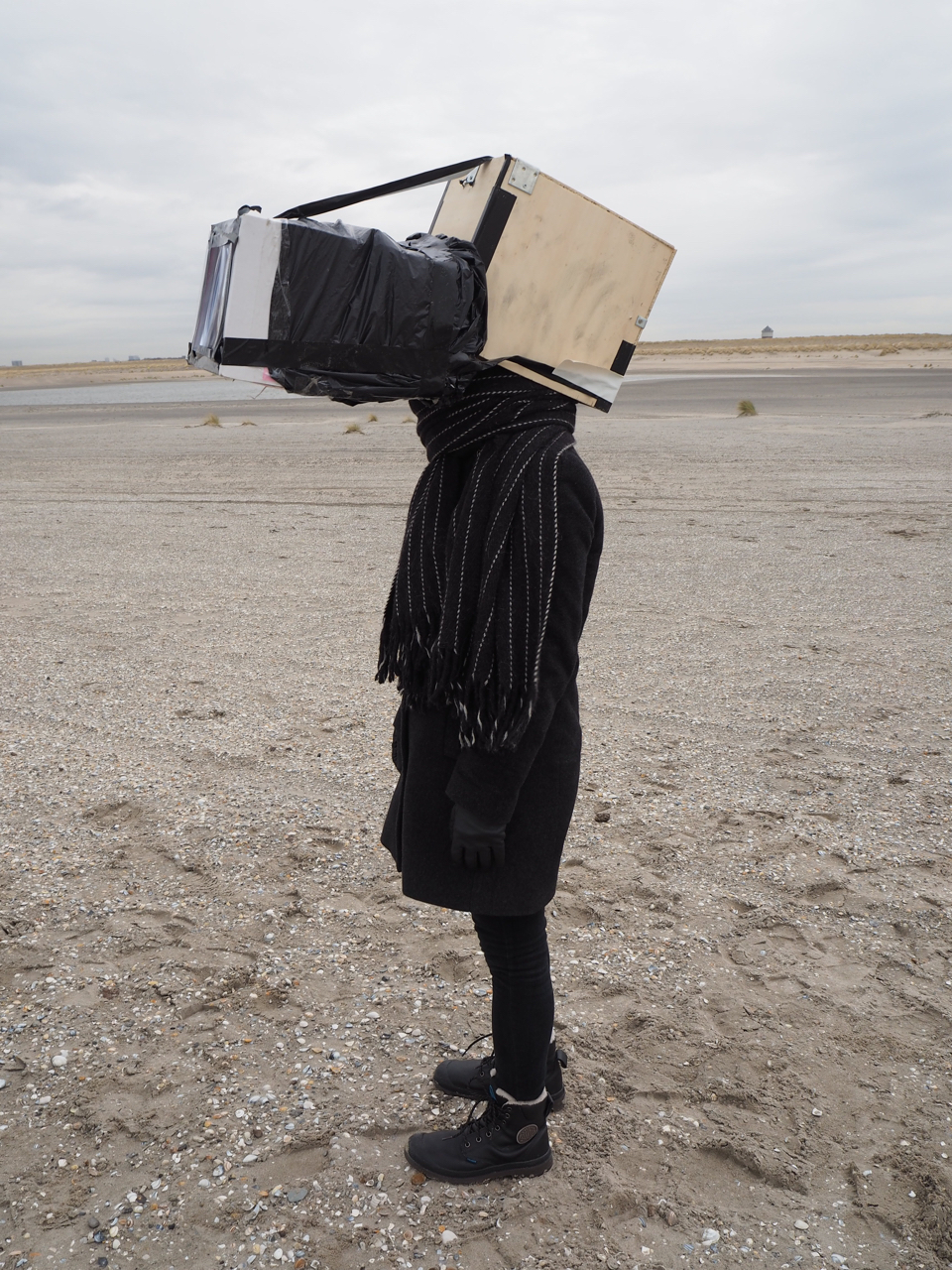
Pushing down the walls
Maya: What is fieldwork, in your views, and how do you experience it?
Cocky: Basically, it is really being in a space without walls. And what happens if you push these walls flat, out? Then you’re standing in a way bigger field. If you’re there with so many other species, horrible or nice weather circumstances, then everything is at play, and you lose control. That’s the moment where something else can start in a creation process.
Maya: Do people have a hard time letting them go?
Cocky: Yeah. I decided to teach for one year not within the academy, but only in an abandoned place on the beach. You had to bike for an hour to get there. It was the only place to meet me. Or to meet each other. Students were very enthusiastic, but after two weeks, they started to complain. “Yeah, I don’t think I can work here, because there’s no power.” Or, “There is no storage space here. There’s nothing here.” There was nothing there, so yeah, how can we work? That was the question. There are no power outlets there, and no storage space. And many, many, many more impediments. You need a whole other approach to do this kind of work. The whole process was slow. It was for a year. I wanted them to feel all the seasons. And then at the end of the cycle—four seasons—students wrote up conclusions and insights. It was beyond.
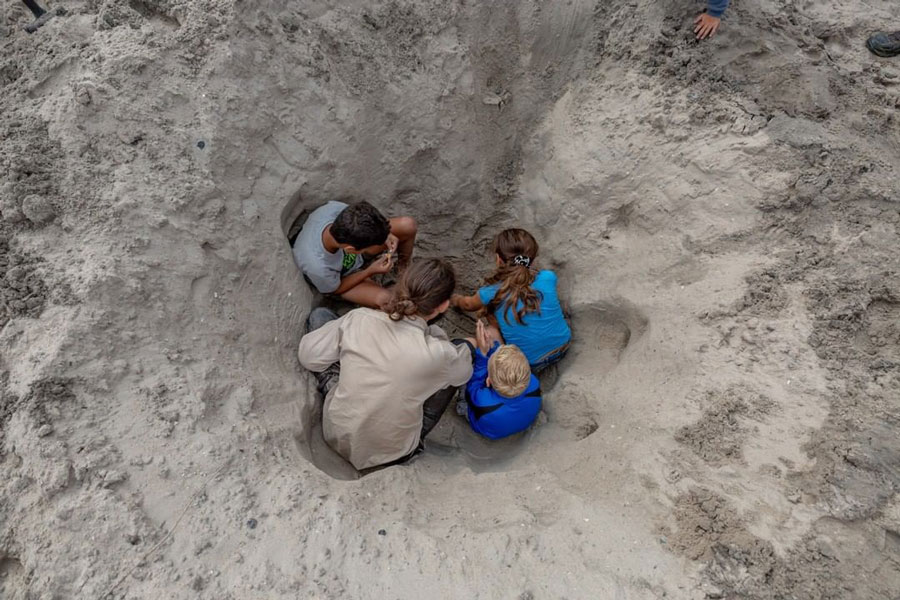
I use everything around me to shape things: Working in exchange with place
Maya: In your work I see a lot of emphasis on not just the artist creating knowledge that goes outward but also taking in knowledge and context and relationships. I’m curious if you could talk about those relationships a little bit.
Cocky: A work exists really in exchange with a place. So maybe that’s also one of the pillars of fieldwork. It’s impossible to go with your ideas and do something to a place. First of all, it’s frustrating, it never works. It’s completely dominant and non-exciting. So it’s really an exchange. For instance, on Zandmotor I was overwhelmed by this feeling, I did some tests, and then I took everything that happened there into account. There were, for instance, birds flying in circles around this specific spot close to me. And sometimes they led me to exactly the right place or solutions. I listened to everything, very carefully. That’s how I create a work. I use test audiences. When works are not finished, and then for instance 20 people come, all kinds of different people, I do a test run. Or we do tests together. And then I see everything an audience or friends or people I know do. That is all feedback and it brings new insights. It’s as important as myself. I’m more like a composer. I use everything around me to shape things.

Maya: Theun, your work also is really site-specific and really engages with location and place. Do you want to talk about that some?
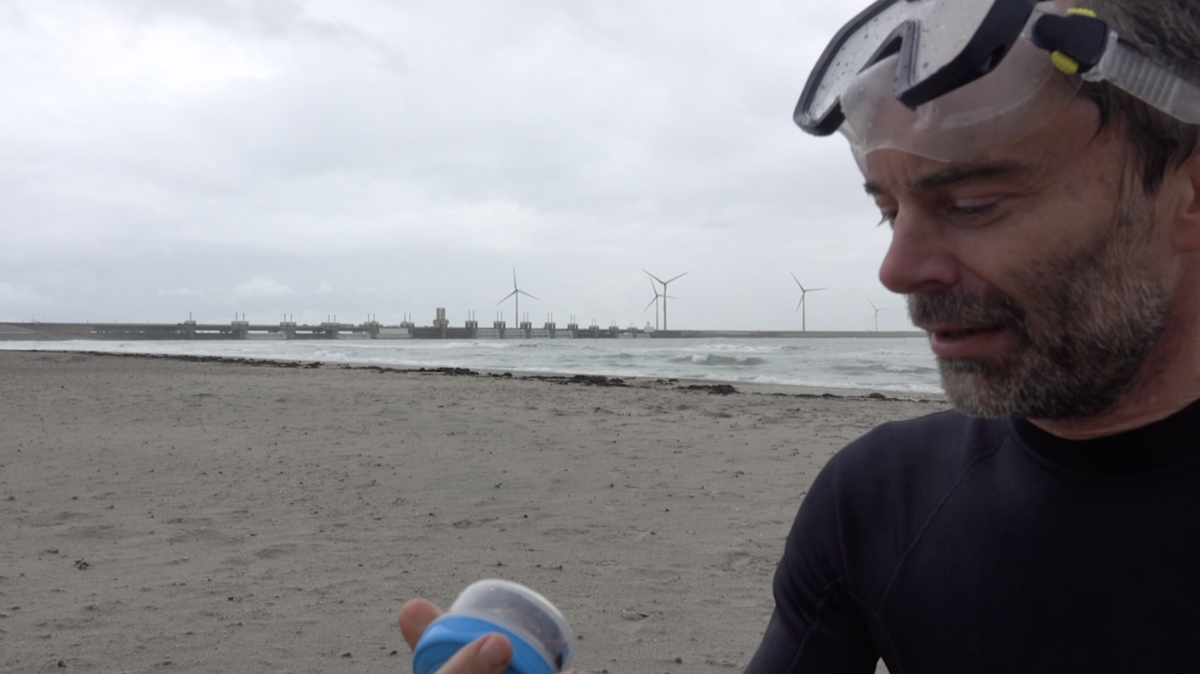
Theun: You’re just a person in the world, and you wonder about things. You talk about these things with other people, and then questions come up. Sometimes the question resonates to such an extent that it becomes a thing. I like to work in groups together with other people. The most fun thing is to go out with the group for a while to an area that seems relevant for your question. So, for instance, with a small team we went to northern Finland. There’s a biological field station there, and this field station has been built there because ecologists think, okay, we can study relationships between organisms really clearly here because it’s relatively simple. There’s a few birds, there’s some moss, there’s stones. That made me think, if we want to study relationships between technology that humans make, that’s maybe a nice place to start. Let’s see what happens if we start there. So we went there with a small team, and Ian Ingram was part of the team. He made this small robot that tries to communicate with crows. The crows out there aren’t even very used to humans. And then putting a robot that’s sort of signaling to them with body language, that’s super interesting. So we spent about a week just trying to get the crows close by. So you start to learn about them more. That’s how I like to work.
Machine Wilderness from foam on Vimeo.
Maya: It also sounds really relationship-based and time-based. For both of you, really durational work.
Theun: Yeah. Antti Tenetz was also part of the team. He is from Finland and he knows the area really well; he’s led scientific expeditions as a guide, things like that. So if there’s local knowledge, somebody who knows the place like home, then you can really visit. And you can really explore. Otherwise it can stay superficial and it’s just about the impressions of a place. So that’s kind of what I look for.
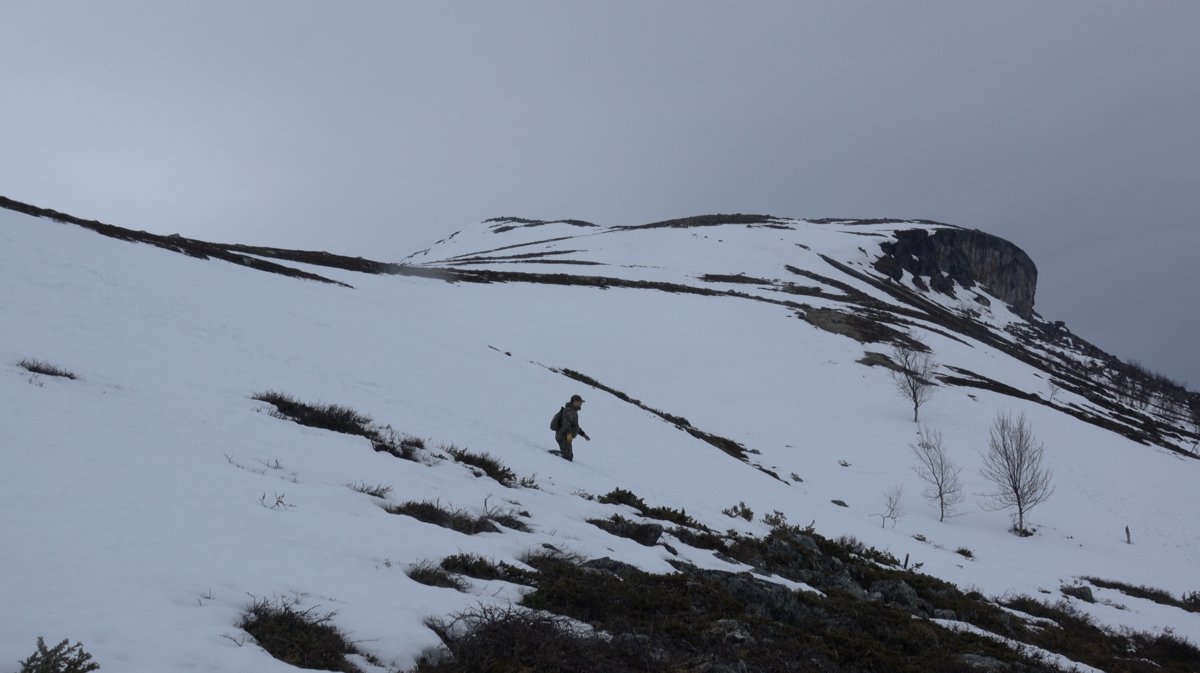
Maya: Cocky, you talked about showing up at this beach and being completely overwhelmed and I’m kind of wondering, “How did Cocky get to the beach? What brought her there?” Theun, similarly with you, with the biological field station, it sounds like you knew Antti and he was like, “Come.” I’m curious about the establishments of the relationships with places.
Cocky: Maybe I can give an example. I started a Field Academy in Almere. Almere is a 50-year-young man-made piece of land in the water, as the Dutch do. I worked for a few years with groups of students, and we would stay there for a week, we would sleep there; we would work outside, half in the lake, half on land. We were always sort of exotic visitors. It’s great to go there, we do our projects, our things, and then we leave. I found out after two years that the only way to get grounded in a place, maybe, is to connect with local inhabitants. As long as there’s one local participant connected to what we do, then what we do takes on meaning. That is something I discovered by chance. So that is one of the pillars also for fieldwork. If you make a relationship to what you do in the process with local inhabitants, whoever they are, then it gets grounded, because there’s a connection and a conversation. And then you also feel not-alien. Small, I call it. If it’s face-to-face connection, and the connection is there. You can do the same thing by asking. You can ask a place, “Is it okay that we are here?” We did a ritual on this place in Almere, asking the land a question. So we turned it around. And in this ritual an unexpected thing for me really came up: the place where we were working was lonely. And just to be there and have fun together fed the place. It was for me, like, wow. That was really asking the place. So you can ask a place or whatever you work with. An animal, a plant…
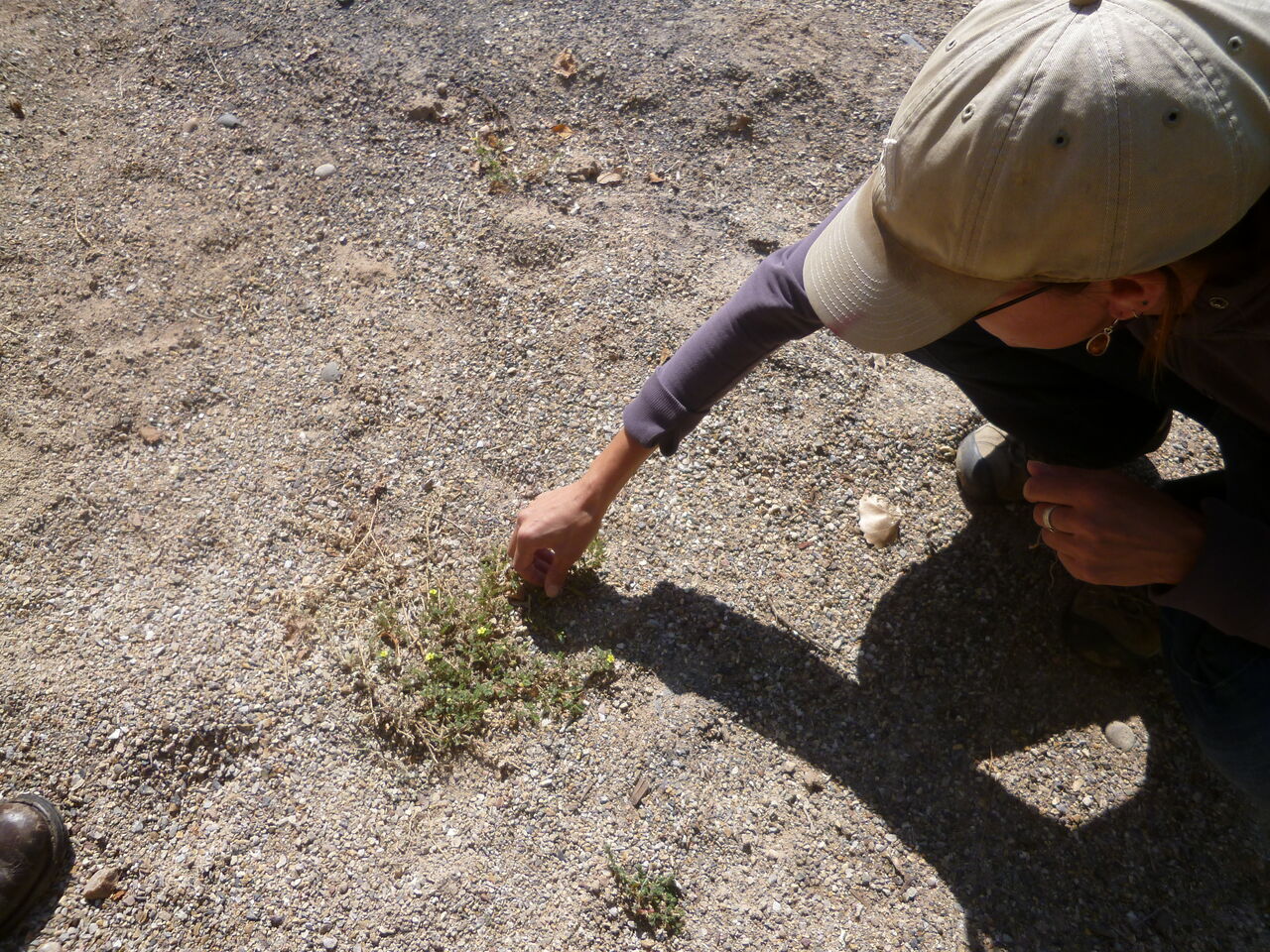
Maya: How did the place communicate that to you?
Cocky: It was a Chilean ritual, lying on the spot itself, and holding this question. It came like a big feeling. I can’t describe it. I was not the only one who sensed it. So that was very good. Others felt that too, and then we didn’t have to speak about it anymore. But it was super clear. And then you feel allowed to be there and things take shape. Just playing in space can bring something. It’s like, [makes whooshing sound].
Theun: For me it’s based on long-term friendships, I guess. For instance, I’ve worked in orchards for maybe twenty-five years now. It was never a strategy or anything, it just sort of happened. I’ve worked a lot with people who do landscaping. When we go to Finland, it’s also because I’m friends with Antti. You can’t really go somewhere without a good guide that knows when you trespass on something. So it’s usually based on very long-term relationships with people who are local, or who know. It can also be that you don’t know a place, but you know the organism really well. An organism can be an apple tree, or a wolf, or a crow.
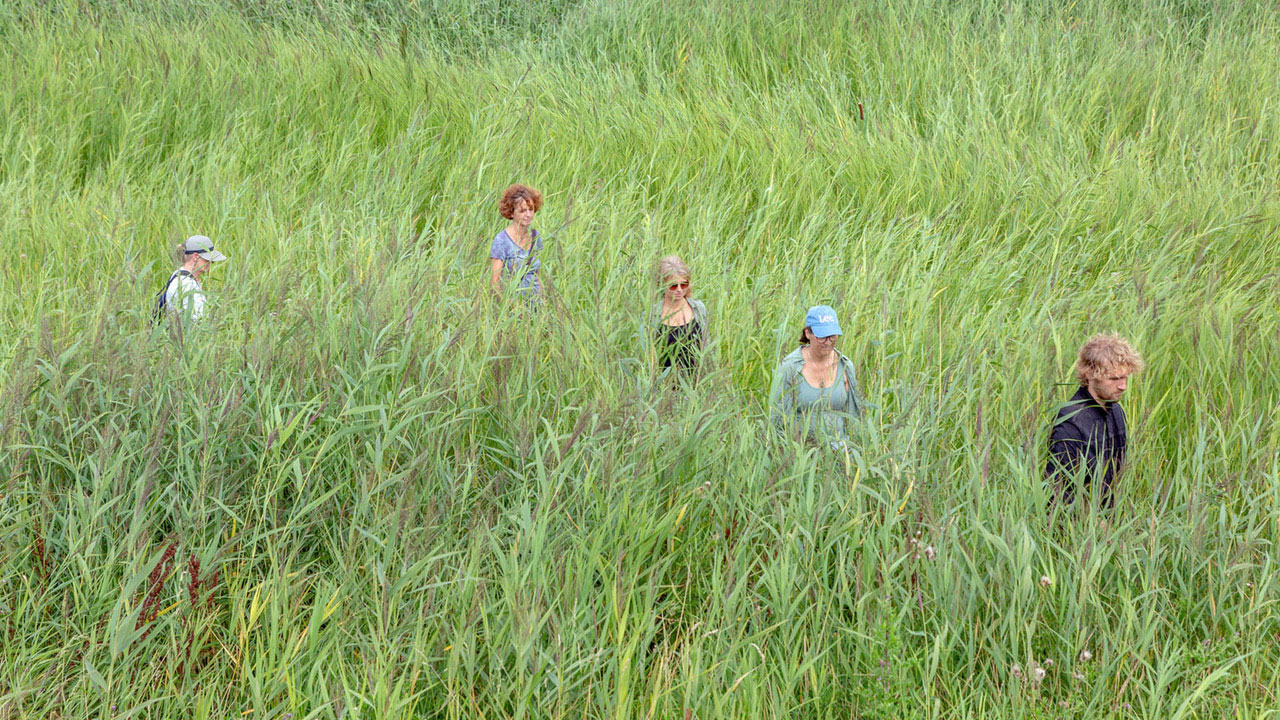
Relating to the tree is never boring: Scale
Maya: Theun, what is it like to be able to read an apple tree? Or a whole orchard of apple trees?
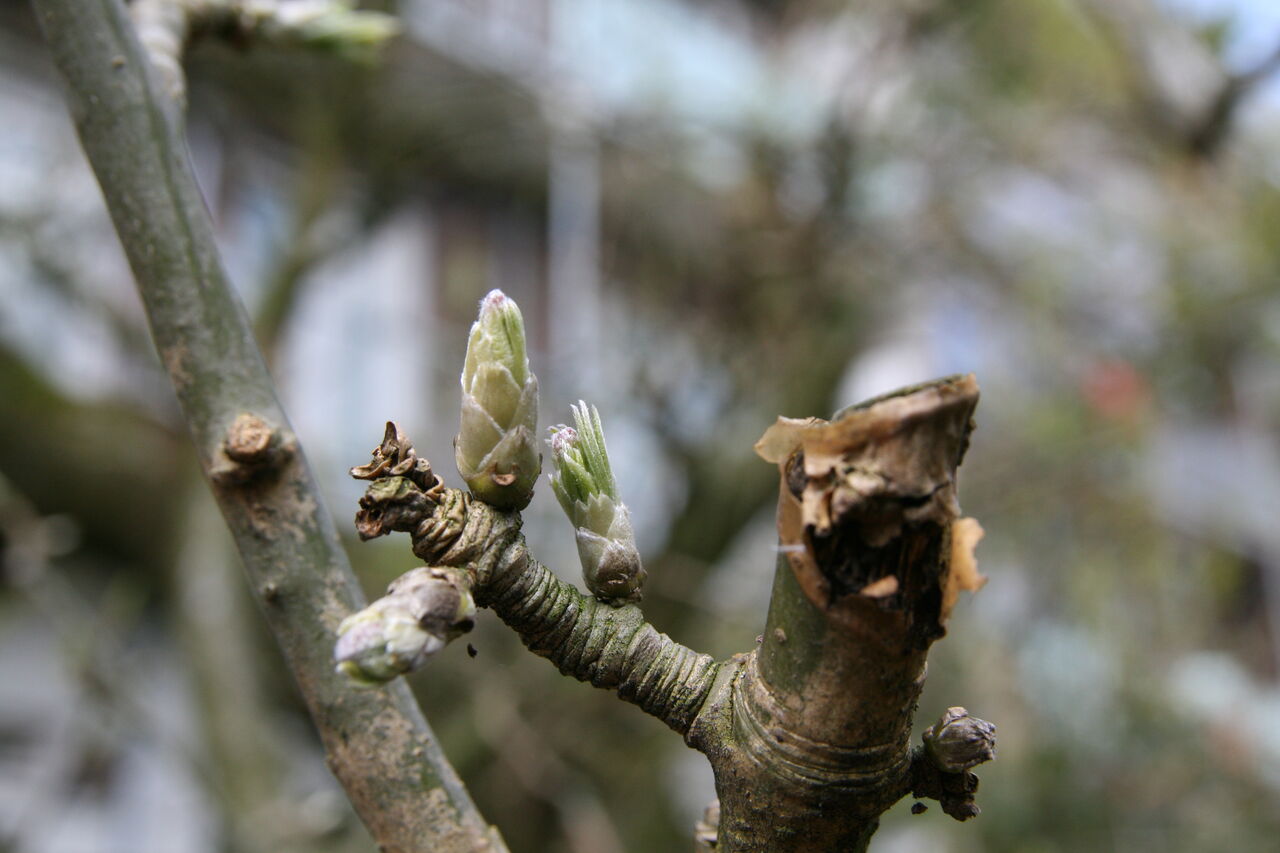
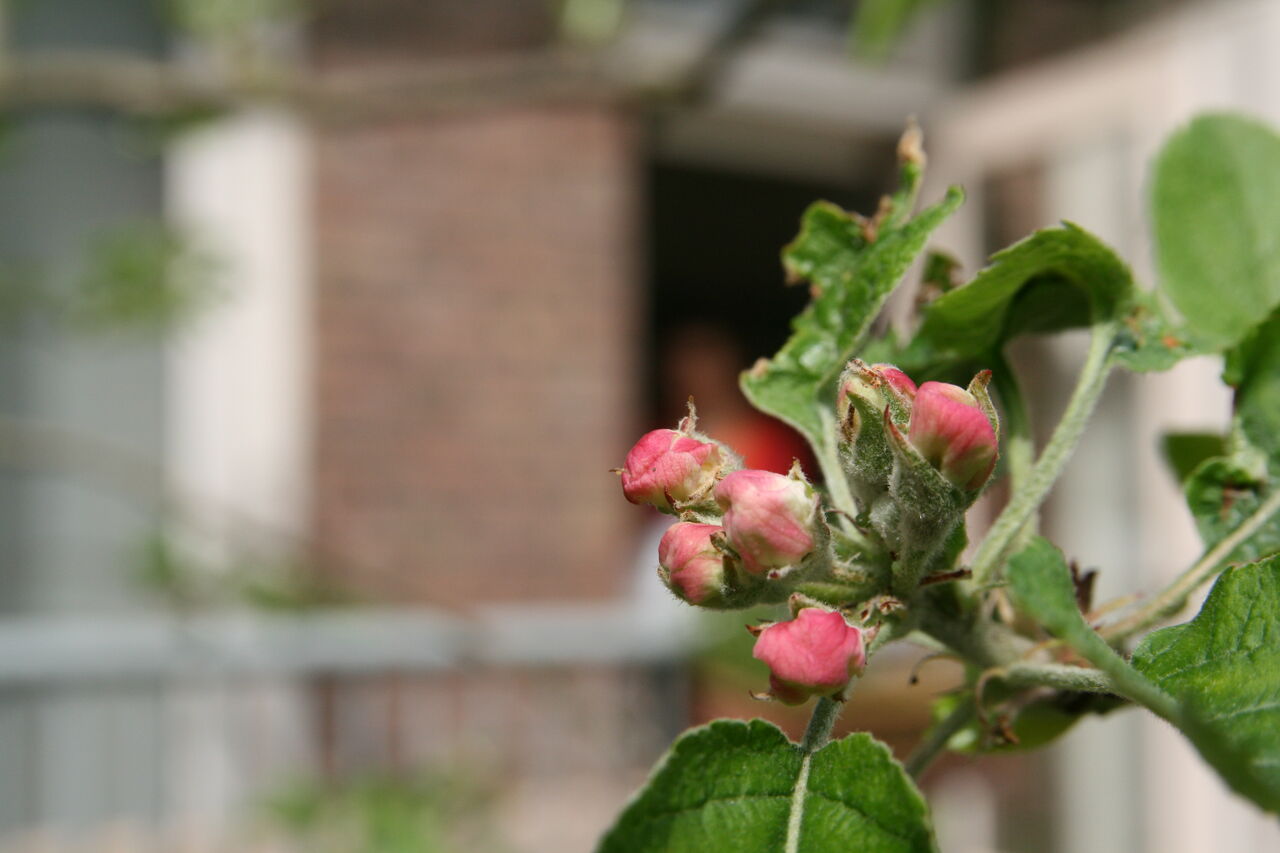
Theun: My best friend, his father was a fruit farmer. So when I was 14 or 15 I started working there in the summers. He told me the structure of how a tree grows and how you have to cut the tree in certain ways. We put little weights on the branches because when a branch grows more horizontal, it grows more apples. When it grows up, it makes more leaves and wood.
Maya: Oh my gosh.
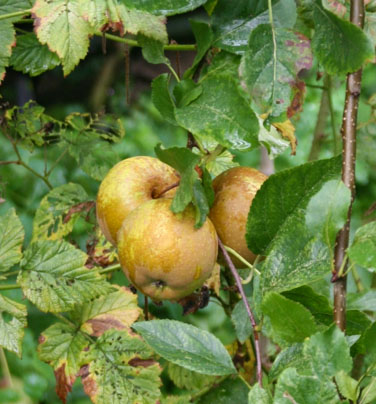
Ruwe Sloterdijk, harvest 2012, first apples on a guerilla grafted apple tree in the garden of FoAM Amsterdam
Theun: Branches at the bottom don’t get many apples, and you wonder why, so you just ask. Because each individual blossom reacts to the warmth of the sun. If it’s in the shadow, it will not mature to a fruit, to an apple. It will just sort of drop off. So over many, many years, you learn about trees, and all the little beings that live on them. And that’s true for the fruit farmers themselves. Just two weeks ago, we finished picking, but every year, the fruit farmer says, “Ah! I’m wondering, why have those green little flies not really come this year?” So for everybody, I think, you’re in the same process. You’re sort of figuring things out together and you’re kind of observing.
Maya: It sounds like a lot of the patterns that you’re able to observe about the apple trees—like the flowers need light and warmth to respond to—translate pretty widely across species and locations also.
Theun: Yeah, well, you start to wonder. Because this organism that you start to know, you see the complexity of the life of that plant, and then you think, “Oh, wait a minute. There are all these other plants around. So what are their lives like?” And because you do it long term, now, in summer, I think, “Ah, it’s cherry time.” And my body thinks, “Oh, I’ve not eaten cherries for a long time.” And then you’re in this orchard, and everything smells of cherries, you’re just there and you’re picking, and sometimes, they crack, you know, they burst; you have to eat it, because, you know, it cannot go to the customer, so you’re eating, eating, eating; everybody’s eating, eating eating; the fruit farmer gets fat, after six weeks, picking those things that you were really made for! You’re just made for this stuff, you know?
Maya: I love hearing this. I really want to learn how to care for sheep one day. I’m so looking forward to that. And I think it might also be annoying. I think doing the chores the same every day will be annoying and I think it will also be great. Like, the repetition that you were talking about, and the routine, and getting into it and knowing stuff with your body.
Theun: Relating to the tree is never boring. It’s more, you know, that it’s a work environment. So you have to start at eight and you finish at five. That gets you sometimes, after four weeks, and it’s been raining all week or something. But actually pruning the trees is always exciting. Because you have to imagine, “Okay, this is what it looks like now, if I cut away that one, what will happen?” So you’re constantly figuring out how to do it.
Maya: I remember that about pruning blueberries when I worked on a farm. And it was really creative; I had to be thinking so much and the time went by really fast.
Theun: So I cannot imagine that working with sheep could be really boring.
Cocky: I like what you say, about pruning these little bushes, that your brain was also on high alert. And I think that’s a wonderful combination. That sometimes also your brain and your body are working on something.
Theun: I started working with Jeroen, who’s, like, a giant guy. What he does is make gardens for these rich people. Rich people move, and they have a big estate, and they want a different landscape. When I came to him, there was a guy who wanted to live in the forest. But the forest ended at the end of his garden. Our job was to extend the forest without him being able to see the difference between what we made and what was there. Then, you know, trucks arrive with 30-year-old trees, whose root balls are the size of a person. The tree’s lying down on the truck and the root ball is this big, and then the crane plants it. And then around it, stuff has to happen. So you’re digging and you’re carrying these bushes, and you’re doing all kinds of stuff. And because it’s such a big size, you start to feel, “Oh, that’s the weight of a tree.” So from these small apple trees you start to think bigger. When I started out with plants, I was thinking, you know, in terms of a plant in a little plastic cup. And now I think, okay, a forest. That’s interesting, to relate to those bigger scales also.
Maya: Yeah. And just feel a part of things.
Theun: And then we make a twenty-five meter pond. These digging machines come. It’s maybe very Dutch to think about making landscapes, but it helps you relate to soil, water, populations. For instance, how to plant a population of ferns that looks natural. They have a different pattern to mosses. Or fallen branches; you know. We were looking around: “Why is our forest not realistic?”
Maya: That is amazing! You put even fallen branches in?
Theun: “Yeah, there’s nothing dead in our forest. Okay, yeah, we should get some dead tree stumps”, so we started dropping these dead trunks, and throwing lots of branches in there, and leaves, of course...
Maya: Serious installation artwork.
Theun: Yeah! Because it’s sort of mimicry; you learn a lot.
Maya: Do you know if animals ended up coming from the established part of the forest?
Theun: Yeah, they did, because water is scarce there, and this big pond that we dug, I think within a week there were deer. Because it’s sort of a dry area.
Maya: Cool. Wow.
Theun: So, people guide you, and organisms guide you.

Pillars of fieldwork
Maya: Cocky, you had mentioned a couple of the pillars of fieldwork. What are some other pillars of fieldwork?
Cocky: For our Field Academy, final presentations are important. In which you include local inhabitants. And you leave something; you give something back to a place. It’s so important to give, to not only take from a place. That is so not satisfying, so always give something back to a place. It can also be like saying thank you to a place at the end of the day. Or when you leave. I never leave a place without saying goodbye. Yeah, I really think asking a place about the things you do and giving something back. Giving can be even mental or in silence.

Maya: This is exciting. I feel like I say hello to places and beings of other species a lot, but I don’t say goodbye. And I’m going to start trying and saying goodbye, and see how that is. That seems important.
Cocky: Exactly. It’s fantastic. And then you close your visit.
Maya: You’re not just leaving things hanging.
Cocky: Yeah. And then all is good. So you can happily say thank you! “That was great! Bye!”
Maya: “Thanks, bye, see you next time!”
[All laugh]
Cocky: Pillars… like what Theun is saying, look for local guides. And maybe something completely else is a guide. Maybe an annoying fly can also be your guide. As long as you get out of your thinking. For me, personally, things work when it’s not comfortable. I like to work when it’s a bit harsh, cold. So you have to work harder to get something. If everything is around in abundance, I just do nothing. Which is also great, actually. Maybe every season offers something different. But I like to go to places in the Netherlands when it’s cold and barren and nothing, then I get inspired. Maybe because it’s like more of a blank canvas. And I can feel more clearly what the place needs or asks for.
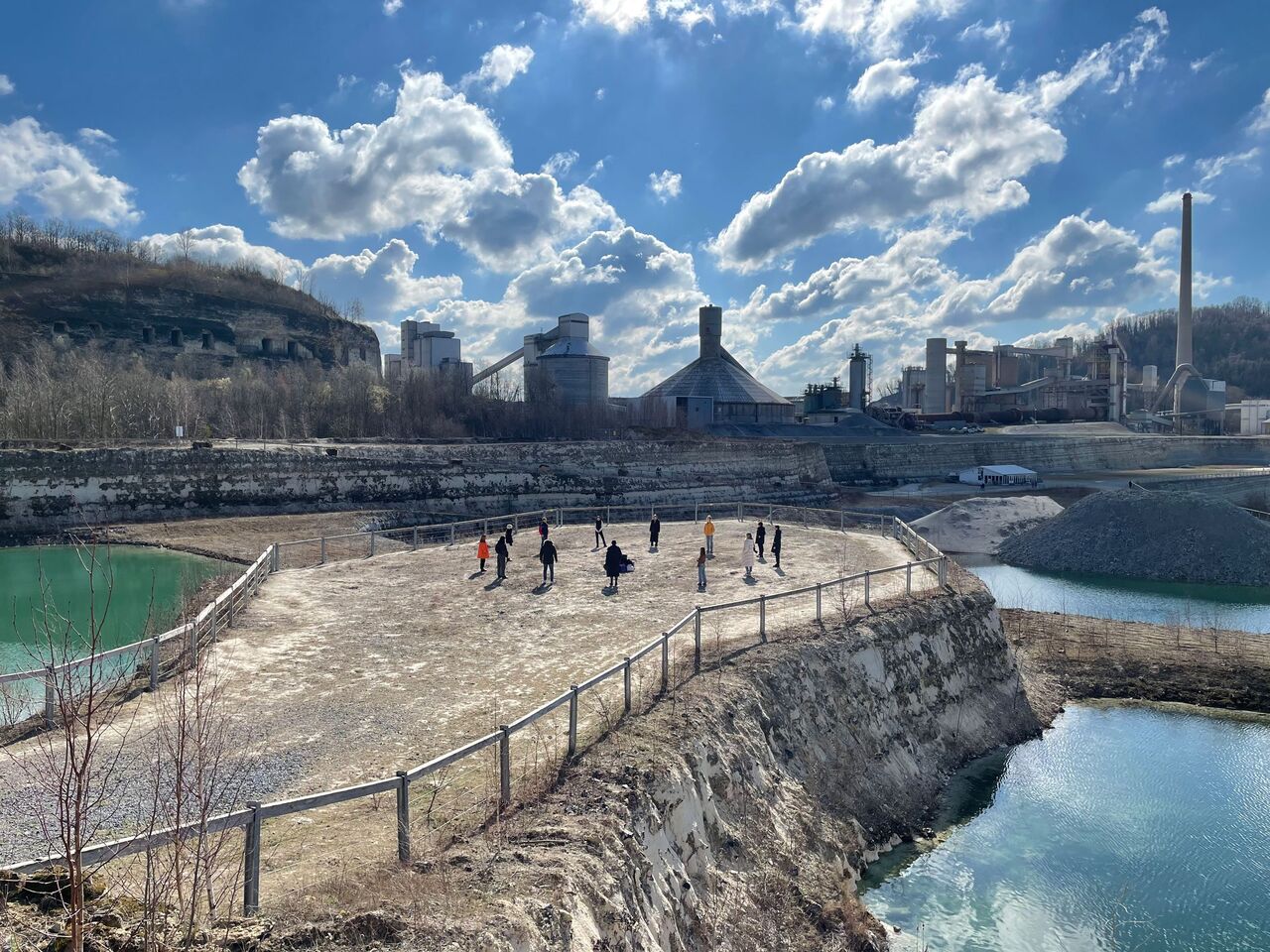
Sometimes I can just read and write with wind
Theun: Maybe you could say something about working with air in general. Because hanging from a kite in the air is being in the landscape too.

Cocky: I like to work with the elements a lot. That’s maybe more personal. And then it’s completely about tuning in. You have to sometimes wait for a week on site for the right winds.
Sometimes I can just really read and write with wind. You can relate to it. You tune in. If you can tune into something, it doesn’t matter what. A grain of sand or a plant. A sheep. I have it automatically with wind, I think.
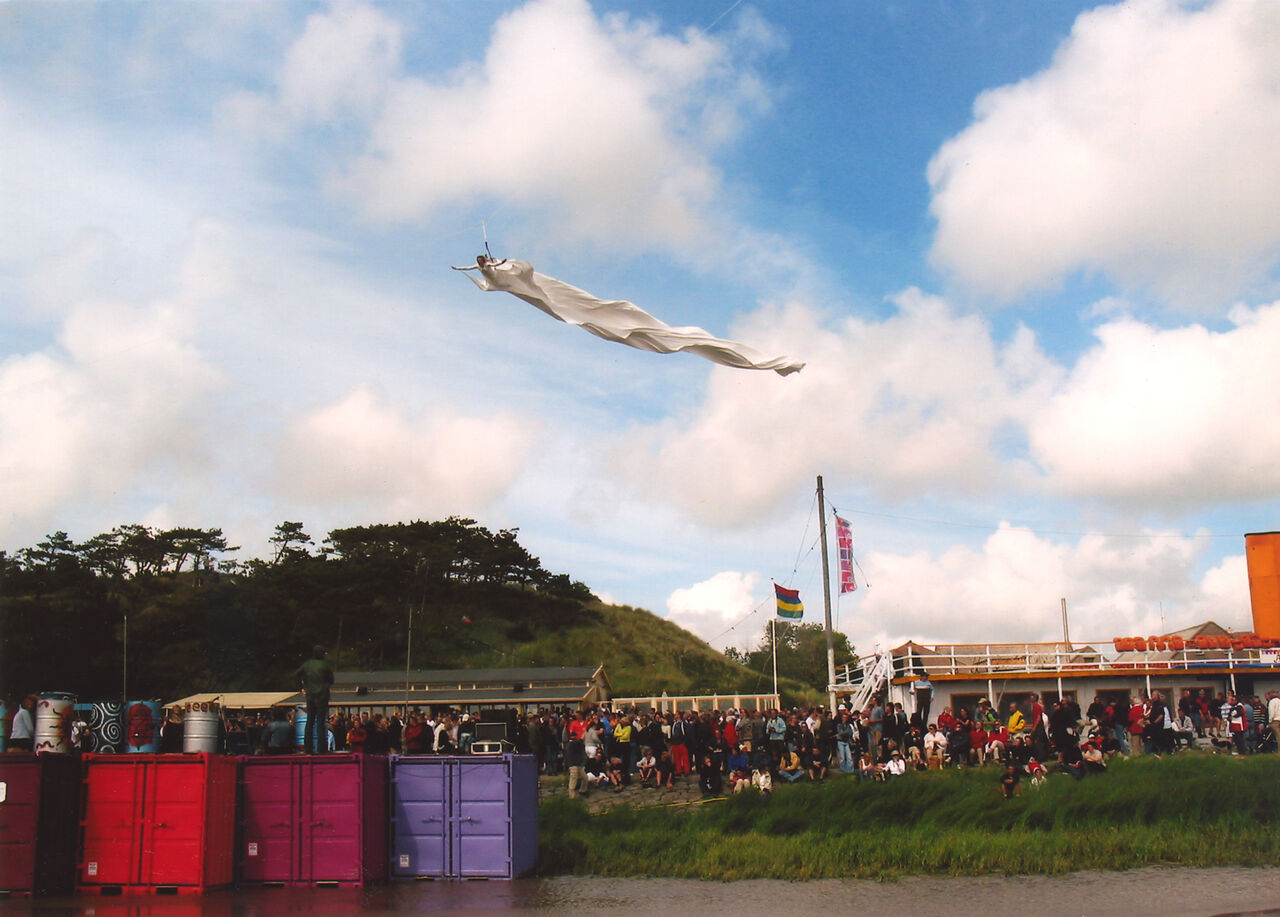
Maya: Has it always been like that for you?
Cocky: Yes. Maybe it’s because I was born in a very open field. There was nothing. Not one tree, it’s only grass fields. So there’s something under your feet, and then the backyard is forever endless nothing.
Theun: It’s one of the flattest parts of the Netherlands, if you can even imagine how flat that is.
Cocky: Without anything.
Maya: So you can see really far.
Cocky: Yes, you can see really far.
Theun: You relate to sky, mostly. Because most of the stuff is sky.
Maya: Wow.
Cocky: And even the inhabitants there, the farmers. They had these turned faces. Like this [turns face at a 45-degree angle from the camera]. They all walk like this. Because all the time when there’s wind, you have to turn your head in a certain direction to hear.
Maya: Because otherwise the wind drowns it out, right?
Cocky: Yeah, the whole field had a turned head.
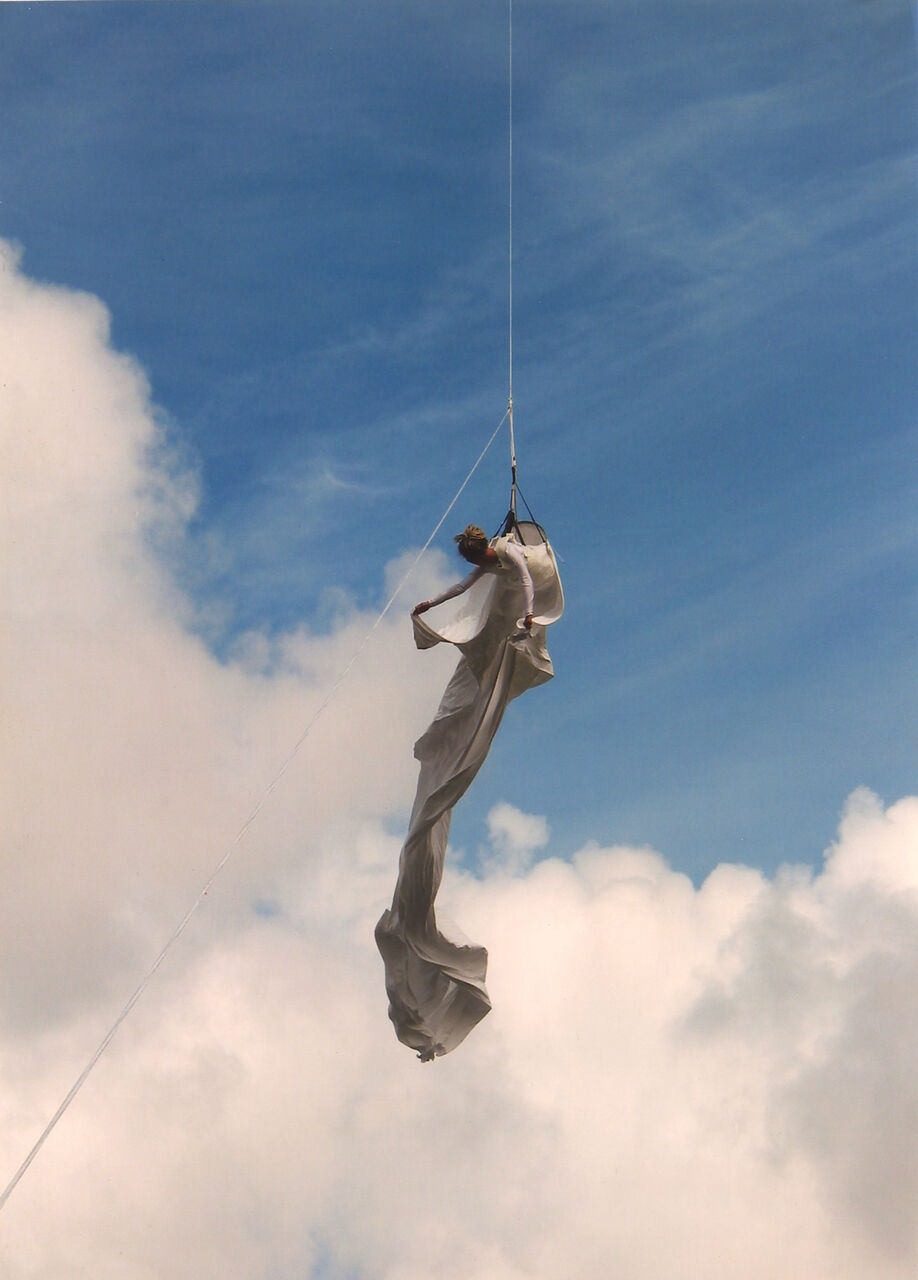
❧